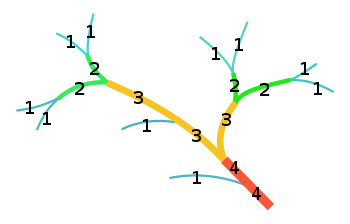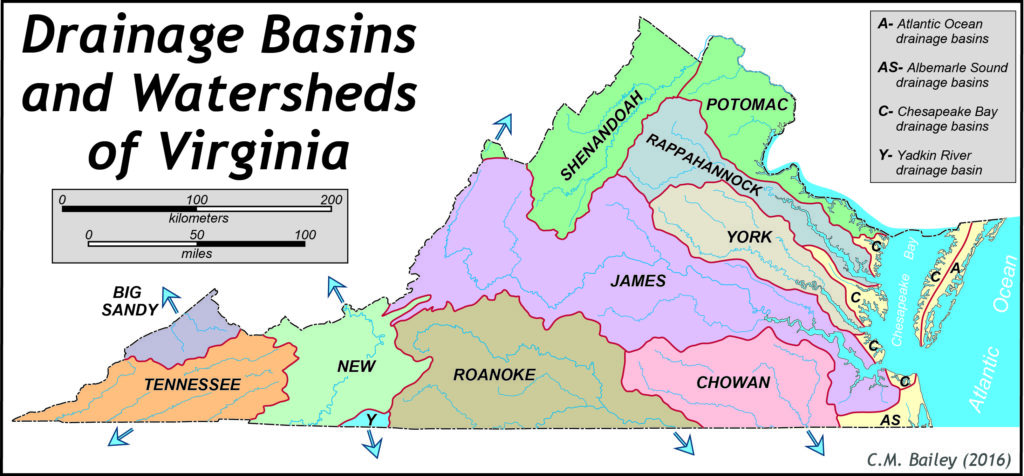Registration is now open for this summer's North Fork Conservation Corps at Seven Bends State…
What Makes a River a River?
A River is a fourth order stream or larger…
Wait, what’s a fourth order stream? What’s a stream? Is it the same as a creek? What about a brook, or a run? What about a rivulet? Or tributary?
Well, it turns out that by technical definitions, a creek, brook, run, and rivulet are regional varieties in dialect that all translate to stream, or small body of running water. So we’re all right. But a river is a fourth order stream or larger. What does that mean? Let’s start at the beginning.
A first order stream is the smallest one, it begins at the highest elevations and is made by rain water runoff collecting together (think of the water you splash through while hiking near the top of a mountain). As that first order stream makes its way down the mountain it will join up with other first order streams. 1+1=2. The second order streams are made up of two first order streams and are slightly larger. Now it gets tricky, when two (or more) second order streams meet they make a third order stream. When two third order streams meet they make a fourth order stream, or river. According to DCR the North Fork is a fifth order stream, or a small river. The main stem would be a sixth order stream, or slightly larger river. This ordering system goes on up to the twelfth order, which is the Amazon River– the largest river in the world.

When defining a river, you automatically, though in simpler terms, refer to a watershed. A watershed is the area of land in which all water runoff drains to the same point. In our case, its the North Fork. The North Fork watershed covers six counties and is approximately 661,821 acres. Some watersheds are larger, and some are smaller. It really depends on what you consider the drainage point to be. The North Fork watershed is comprised of smaller watersheds, and itself is a small part of larger watersheds (think the Potomac River and Chesapeake Bay). All rivers lead somewhere, and our river ends up in the Atlantic Ocean.

Rivers also connect people. People to other people, people to the land, people to the entire world. They’re a source of transportation, energy, food, and recreation. They inspire us, give us somewhere to live, and provide for many of our needs. So next time you splash across a stream, creek, or river, stop and ask yourself, is it a stream or creek? Or maybe even a river?
Technical definitions aside, how would you define a river? Creek? Stream? What does the word river mean to you?
Share your answer with us on Facebook or Instagram!
